Mauser Selbstlader M1916 self-loading rifle
Self-loading rifle arr. 1906, had automatic on the basis of a semi-free shutter with braking using a pair of swing arms. This weapon during the tests confirmed the performance of the proposed automation, however, did not differ in high reliability. According to the results of inspections, the army decided not to accept the new development of P.P. Mauser for armament. Moreover, in the middle of the twentieth years of the 20th century, the German military, having familiarized themselves with the slight progress in the field of self-loading weapons, were completely disillusioned with such systems.
Over the next few years, German gunsmiths continued to develop self-loading systems, but until a certain time their inventions did not interest the potential customer in the person of the army. The command changed its mind only after the start of the First World War. During the battles, the high potential of machine guns of various classes was confirmed. In addition, the prospects for self-loading weapons for infantry became clear. The consequence of this was the appearance of an order for the development of new rifles, having the ability to recharge independently.
The order to develop a self-loading rifle appeared in 1915 year. Shortly thereafter, the design team of the company Mauser proposed one of the existing projects that met the requirements of the customer. Back in 1910, the M1906 product was created as part of the M1910 rifle upgrade. Later it was modernized during the 10-13 project. After the appearance of the army order, the project was once again changed, resulting in the appearance of another modification. Creating a new weapon was carried out without the participation of PP Mauser, who passed away in May 1914-th. Nevertheless, the colleagues of the late gunsmith took into account all the experience he had gained during previous projects, and also took as a basis some ready-made ideas. As a result of processing the finished design rifles "06-08" and "10-13" with a number of improvements, a sample of the new weapon appeared.
Initially promising rifle was named Mauser Selbstlader ("Mauser, self-loading"). Subsequently, the name reflecting the year of development, M1915, appeared. Also, a rifle and a carbine on its base are often referred to as Mauser M1916. In addition, in different kinds of troops, weapons were adopted under different names. Despite the difference in names, they are all almost equivalent and denote the same weapon, based on the same ideas and having minimal differences.
Recall, the M1906 self-loading rifle automatics used a semi-free slide, which was fixed with two swinging levers before the shot. The position of the levers was changed using a massive slider part moving between them. When moving the slider forward, the arms diverged, releasing the bolt, and its reverse movement led to a shift of the levers towards each other, followed by the rest of the barrel. Such a braking system allowed the weapon to absorb some of the recoil energy of a relatively powerful rifle cartridge before the bolt began to move. This made it possible to drastically reduce the mass of the shutter, and also to do without a large and powerful recoil spring.
However, the M1906 and 06-08 rifles had a number of characteristic drawbacks. For example, during the initial charge of the weapon, it was necessary to move the slide and the bolt to the correct position, after which it was possible to insert the clip with the weapon. This process required a certain skill and therefore could not arrange the military. Also, the rifle was not distinguished by high reliability. As a result, in the new project it should have been made more reliable and easier to handle.
When developing a new weapon, it was planned to preserve the general features of ergonomics and architecture characteristic of rifles of that time. Nevertheless, the need to use some units has led to a noticeable change in the appearance of the rifle. As a consequence, the rifle arr. The 1910 / 13 and 1915's turned out to be very similar to the samples of self-loading and automatic weapons of the next decades. The main similarity with such products was given by a shortened front box from which the barrel protruded, as well as a rather large box-shaped store.
The Mauser Selbstlader self-loading rifle was a long-barreled weapon designed to use standard rifle cartridges 7,92x57 mm. It was proposed to use the traditional for that time wooden fittings in the form of a lining of the trunk and a box with an integrated butt. Inside the wooden parts had to be located all the necessary mechanisms.
After refining the project, undertaken as a result of ordering the army, the rifle received a rifled barrel with a caliber 7,92 mm and a length of 600 mm (76 calibers). The barrel was mounted motionless and secured on a wooden bed. His breech part was fastened with the front wall of the receiver. Also, the barrel served as the basis for sights.
The stem box of the M1915 / 16 rifle was made in the form of a metal block consisting of several main parts. The wider upper half of the box contained the main parts of the automation, and was also equipped with a removable top cover. The lower half of the box was less thick and was intended to be used as a frame of the firing mechanism. Also next to it was the receiving mine shop.
Inside the main part of the receiver should have been placed the main elements of automation. In addition, part of its parts was placed in the lid. The receiver had a longitudinal channel with a narrowed front and an extended rear. The shutter had to move along this channel, and it was proposed to place the swinging braking levers in the course of some stages of reloading inside the constricted walls.
The shutter of the Mauser Selbstlader rifle was designed as an elongated piece of rectangular cross section. In front of the gate, there were means of interaction with the cartridge, including the extractor. Inside was placed the channel for the mainspring and drummer. Also inside the gate there was an additional channel into which the return spring and its guide rod were to enter. On top of the gate was located the cocking handle. Due to the use of a semi-free shutter, locking tools were missing.
For returning the bolt to the neutral position, there was a twisted cylindrical spring placed in the back of the receiver. In order to avoid deviations from the required position, it was equipped with a guide rod. During reloading, the rod was supposed to interact with the shutter mechanisms and, among other things, perform the coil spring cocking.
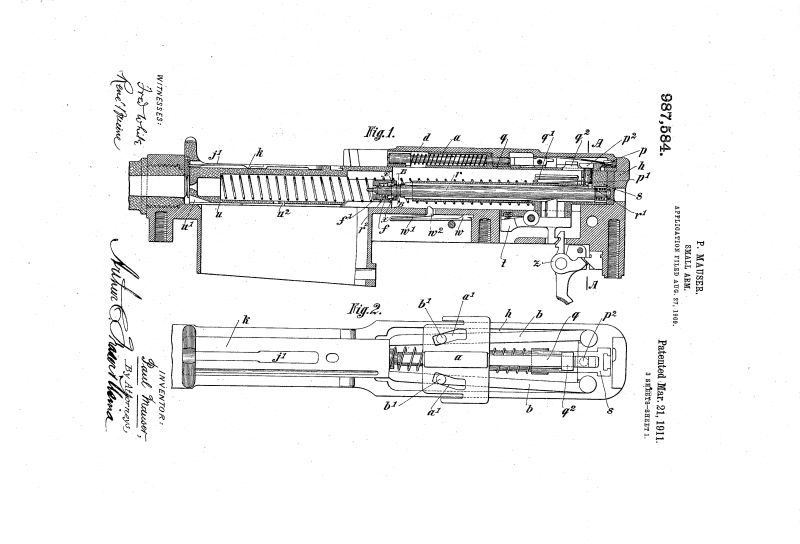
Mechanisms of weapons before firing. The bolt is in the forward position and pressed against the levers. Drawing from the patent 1909 g.
Automation on the basis of a free gate when using a powerful rifle cartridge must have characteristic features such as a large weight of moving parts and a powerful return spring. Thus, even in the 1906 project of the year, a lever-type shutter-type braking system was proposed, which made it possible to dispense with unnecessary weighting of the weapon. In the course of the further development of the M1906 rifle, it was refined and passed on to a model intended for the army in an improved form.
The main parts of the braking system were two swing arms. They were made in the form of parallelepipeds with side grooves to reduce the mass. On the back of the levers there were axles for installation into the corresponding openings of the receiver, with which they could swing towards each other or diverge in different directions. Near the front of the levers, on their upper surface, there was a pin for communication with other parts.
The cover of the receiver was made in the form of a separate removable parts with mounts for automation elements. The lid had a rectangular shape with U-shaped protrusions on the front, between which should have been included the handle of the bolt or cage. On the inner surface of the cover there were fastenings for a number of parts, including a spring-loaded slider.
The slide of the braking system was made in the form of a H-shaped part with a wide middle plate and two side plates. The latter through the slots in the lids were brought out and represented the handle used in reloading the weapon. For more convenience, the side plates of the ram got a notch. The right side plate interacted with a longitudinal stitch, which was engaged with the bolt. In the central plate of the slide there were two symmetric bent holes. When installing the cover on the weapon, the pins of the braking levers entered these holes. Between the front part of the slide and the wall of the cover was placed a return spring. The cover was mounted on the receiver with the help of the stops in the front part and the latch in the back.
Under the main part of the receiver, which housed the bolt and braking system, fit the frame of the firing mechanism. USM was built on the shock scheme and provided control over the interaction of the striker and the mainspring. Fire control was carried out using the trigger. In the back of the weapon, on its right surface, there was a movable flag of the fuse box. In the on state, the fuse blocked the trigger and shot.
Even during the project "06-08" it was decided to abandon the not very convenient integrated magazine with a capacity of five rounds. Instead, a box-shaped detachable magazine for 20 cartridges was developed. Inside the curved body were placed a spring and a pusher. On the front and rear walls of the store there were stops to interact with rifle mounts. The store was to be placed in the receiving shaft of the lodge and fixed with the help of a latch of unusual design. For greater convenience of operation, a small ledge was placed on the box, placed in front of the receiving shaft.
To change the store, one had to move a small latch placed on the front pillar of the trigger guard. After that, the whole bracket could be pulled down. At the same time, the long front protrusion of its base plate lifted on the axis and freed the teeth of the store. This allowed us to pull out an empty magazine, insert a new one in its place, and then return the trigger guard to its original position.
The 1915 self-loading rifle of the year received an updated wooden lodge design with a shortened front end and an additional ledge in front of the store shaft. At the same time, an unregulated pistol projection butt remained. A wooden overlay was placed above the barrel.
On the muzzle and breech parts of the barrel was asked to mount sights. They consisted of a front sight and a mechanical frame sight. Fly had a screw to adjust and shift to the right or left of the original position. The marking of the sight made it possible to fire at ranges from 200 to 2000 m. However, in practice, the range of fire was much smaller.
The Mauser Selbstlader self-loading rifle was 1,15 m long and equipped with an 600-mm barrel. Product weight without ammunition reached 4,9 kg. According to various sources, the practical rate of fire of the rifle allowed no more than two or three stores to be spent in a minute. Indicators of firing range in comparison with serial army rifles Gewehr 98 slightly deteriorated, but still remained at an acceptable level.
Preparing the M1915 / 16 product for firing has been greatly simplified compared to the basic design of 1906-1908, although there are still ambiguous or even questionable features. First, the shooter had to install a loaded magazine on the weapon. To do this, with a latch, the trigger bracket was pulled down, the magazine was placed in the shaft, and the bracket returned to its place. Then, using a bolt handle, the rifle was cocked, after which it was possible to fire.
When fired, the recoil forced the rifle to move backwards, but the shutter remained locked for a while in the extreme forward position. Under the action of inertia, striving to stay in its place, the slider in the receiver's lid began to move forward, spreading the locking levers and levers themselves with their holes. Stacked in the channels of the receiver, the levers no longer prevented the bolt from moving backward, seizing the cartridge case and compressing the return spring. After passing the required distance, the bolt threw the sleeve out and cocked the trigger.
After complete absorption of the recoil impulse, the bolt came back with its own spring, capturing and sending out a new cartridge. Going forward, the shutter allowed the locking mechanism to work: the spring moved the slider back, which led to a reduction of the levers and the locking of the shutter. Weapons could make a new shot.
In 1915, prototypes of the new self-loading weapons passed the full range of tests and were recommended for use. The military was satisfied with the fact of the appearance of a rifle with automatic reloading, but some of its features did not suit them. In particular, automation turned out to be very demanding for maintenance and did not tolerate pollution. Even a small amount of dust, dirt or sand could lead to delays in shooting. Another problem was the need to lubricate the cartridges placed in the store, for reliable operation of automation. However, similar lubrication contributed to the penetration of additional dirt into the weapon.
The Mauser Selbstlader rifle was afraid of pollution and therefore could not be used in infantry. Nevertheless, it was of great interest to the pilots, because of which it was adopted by the military aviation. In aircraft units, it was used under the official designation Fliegerkarabine 15, and units with balloons and airships soon began to use exactly the same products, but under the name Selbstlader-Karabiner Mauser M1916.
Despite certain problems and the impossibility of widespread use, the German army ordered the mass production of new rifles to begin. Production of such weapons continued until the 1916 year. During this time, the factory Mauser was released about a thousand copies of new weapons. All of these products went to the aviation parts of Germany.
In addition to technical shortcomings, the M1915 / 16 self-loading rifle was distinguished by a rather high cost. For this reason, the aviation unit attempted to find an alternative. Already in 1915, the self-loading rifle Flieger-Selbstladekarabiner Modell 1915 (FSK.15), built on the basis of previous developments of the Mexican engineer Manuel Mondragon, was adopted by the military aviation. The new carbine was about three times cheaper than Mauser’s products, and the capabilities of its manufacturer, represented by the Swiss company SIG, made it possible to quickly meet the demands of the German military. It was decided to gradually replace the Mauser Selbstlader with cheaper FSK.15.
Attempt to save led to mixed results. During comparative tests, it turned out that both models of weapons for aviators have not very high reliability, but the Mauser rifle / carbine has fewer problems with automatic equipment. In addition, FSK.15 lost competitor on the accuracy of the battle. Because of these problems, the pilots often had to fly two Flieger-Selbstladekarabiner Modell 1915 carbines in flight instead of one M1915 / 16 - so they tried to avoid the unpleasant consequences of the failure of the weapon.
The original design of the Mauser Selbstlader rifle was extremely sensitive to pollution, which limited its scope to military aircraft. At the same time, alternative designs also did not suit the military and were, at least, no better. Therefore, the exploitation of Mauser self-loading rifles continued until the very end of the war, including in parallel with other weapons. German pilots had to put up with the existing shortcomings due to the lack of more advanced systems.
After the end of World War I, the operation of the Mauser M1916 rifles ceased. The weapons went to the warehouses. Information about the further use of such rifles is not available, but it can be assumed that the army was forced to abandon the existing weapons for a number of operational, economic and political reasons.
Most of the manufactured M1915 / 16 rifles, apparently, was written off and disposed of as unnecessary during the twenties or later. However, several samples of such weapons still exist and are stored in museums or private collections.
Peter Paul Mauser began the development of self-loading rifles at the end of the XIX century and over the next few years offered a number of projects that differed from each other by the type of automation used. For certain reasons, until the middle of the tenth century of the 20th century, these developments remained unclaimed, but the beginning of the First World War changed the opinion of the military. Only after that self-loading rifles from Mauser managed to reach use in the army, but the designer did not see this success of his designs.
On the materials of the sites:
http://forgottenweapons.com/
http://sportsmansvintagepress.com/
https://google.ru/patents/US918760
https://google.ru/patents/US987584
https://google.ru/patents/US999387


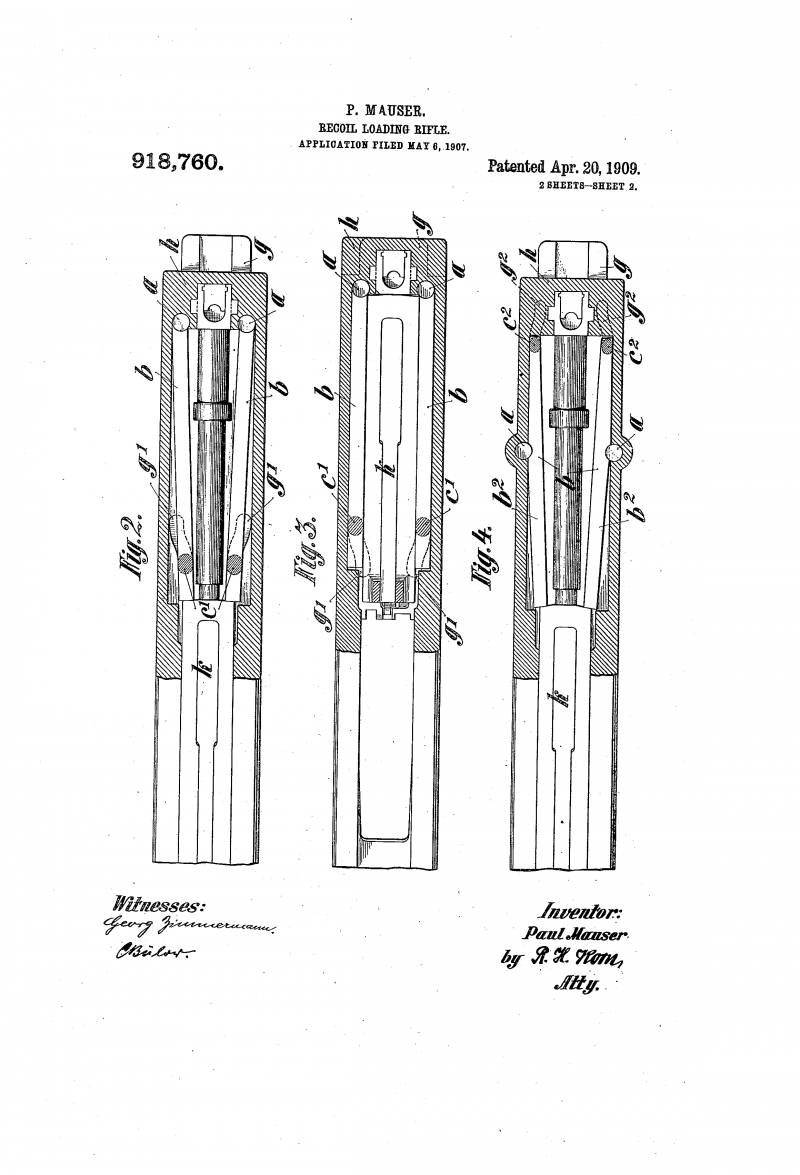
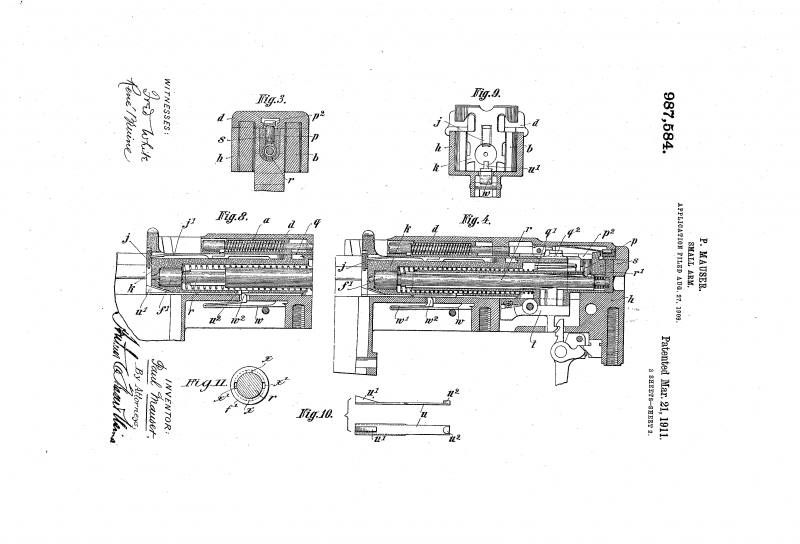
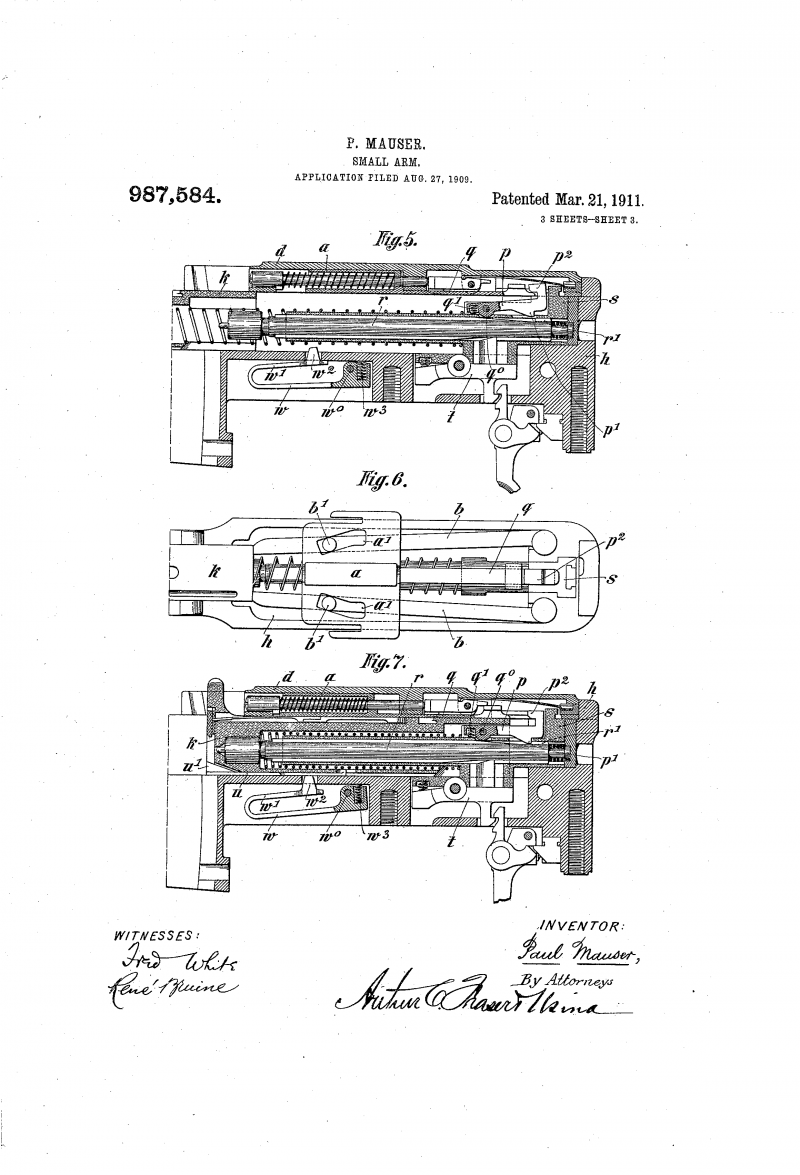
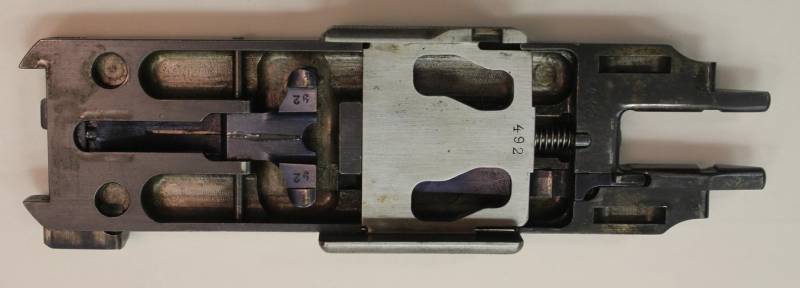
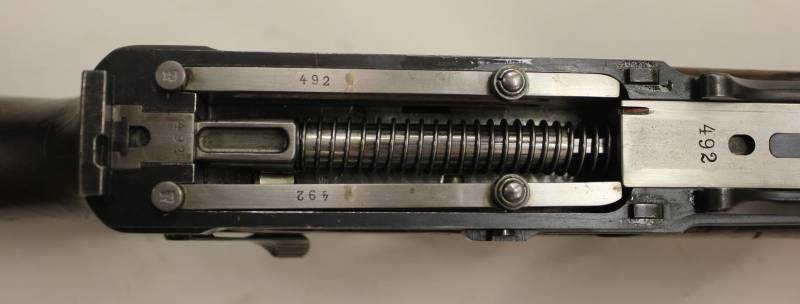
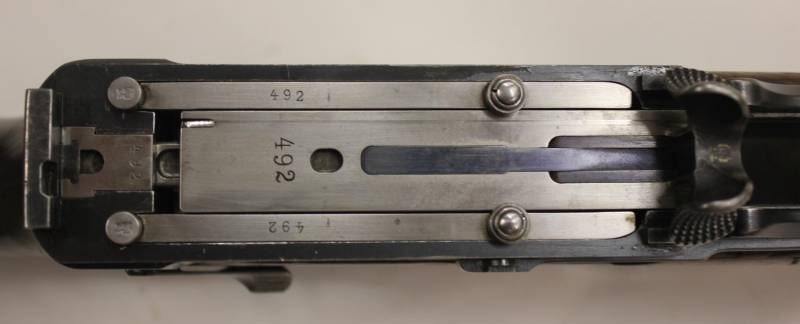
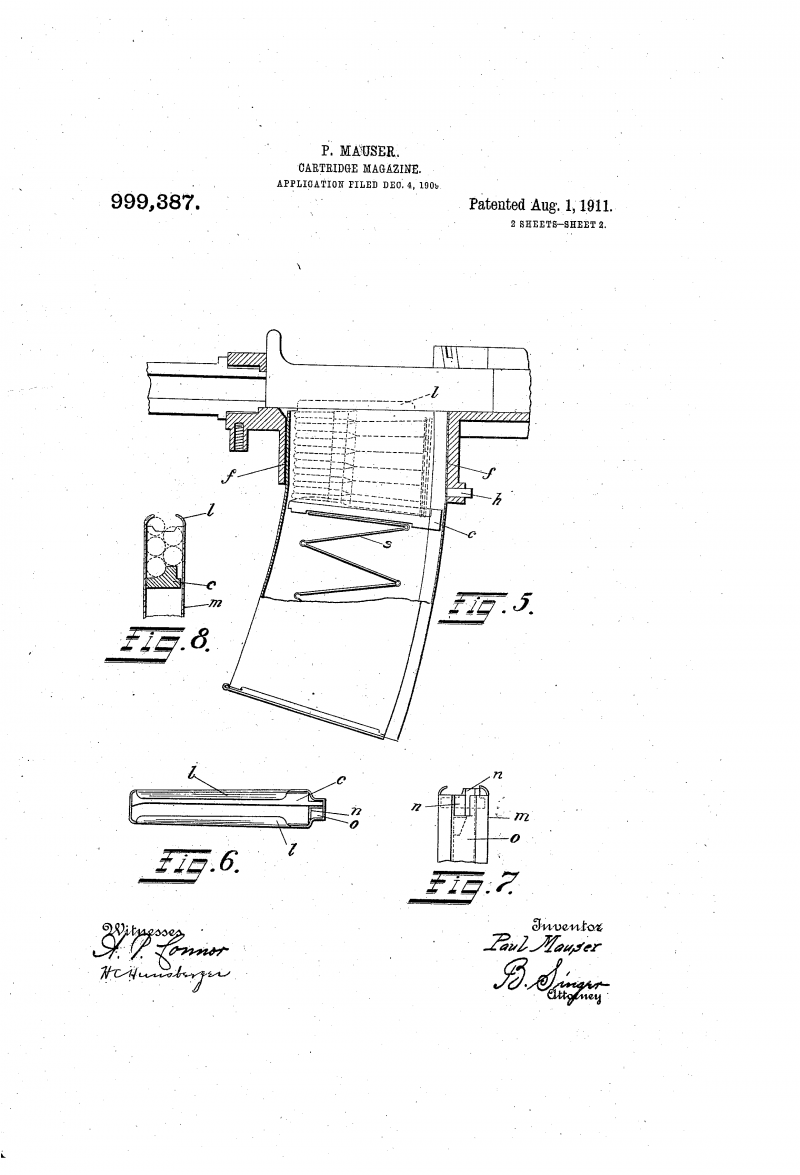
Information